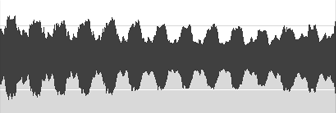Voice Vibrato
Included in the distinguishing characteristics of a musical sound which determine its timbre is vibrato/tremolo. The term vibrato for the singing voice is more commonly used to describe the variations in the voice during a sustained note. When analyzed, it is found that both the pitch and amplitude change periodically so that both vibrato and tremolo are present. The presence of vibrato, within limits, adds richness and expression to the voice. It is often the case that the amount of vibrato increases as a given note is sustained, and many singers use variations of vibrato for expression in singing. Excessive vibrato gives an impression of instability to the tone, so control of the amount of vibrato is a matter of practice and musical judgement.

This recording of a sustained vocal sound shows the periodic change in the amplitude of the sound. You could also clearly hear the accompanying periodic pitch change, so both amplitude modulation and frequency modulation were present.
If the precise harmonic content of a sustained voice sound is reproduced and sounded, the ear can easily distinguish the sound without the vibrato. Stanley suggests that a good vibrato rate for the singing voice is about 6 pulses per second, and that the average pitch variation is about a semitone accompanied by about 3 decibels of intensity variation. The amount of vibrato tends to increase with loudness, reaching about a full tone for very loud vocalization (fortissimo).
|
Index
Voice concepts
Musical instruments
Reference
Stanley |

